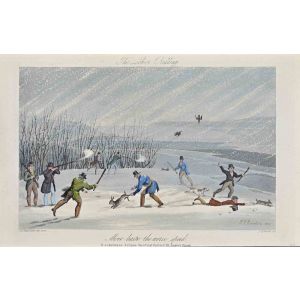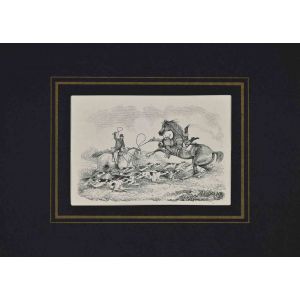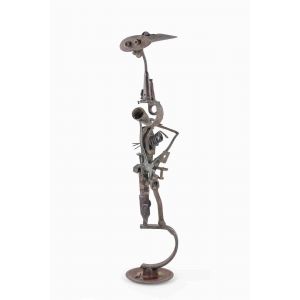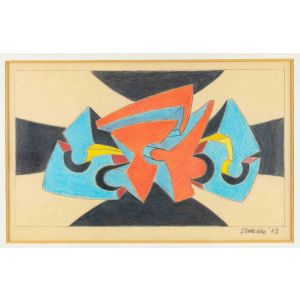Capture of a strange town
Etching on cream paper, copper plate, 4th final state of four. A signature on plate, hard to read, in small letters on the back of a figure at the bottom right. A second signature on plate in small letters is engraved with drypoint on the base of the colonnade and erased. In very good conditions.
James Ensor (Belgium, 1860-1949),a forerunner of 20th-century Expressionism and one of the major figures of the Belgian avant-garde in the late 19th century, James Ensor was a visionary, mystic, allegoric, and anarchic artist who loved exploring religious subject matters, political satire, and carnivalesque imagery.
Etching on cream paper, copper plate, 4th final state of four. A signature on plate, hard to read, in small letters on the back of a figure at the bottom right. A second signature on plate in small letters is engraved with drypoint on the base of the colonnade and erased. In very good conditions, passepartout included: 39.5 x 59.3 cm.
As Taevernier reports: "Delteil mentions three states, Croquez only two. The 1929 exhibition catalogue lists three states. The copper plate has been very slightly bitten and as a result the town seems to be flooded with a dazzling light."
James Ensor (Belgium, 1860-1949),a forerunner of 20th-century Expressionism and one of the major figures of the Belgian avant-garde in the late 19th century, James Ensor was a visionary, mystic, allegoric, and anarchic artist who loved exploring religious subject matters, political satire, and carnivalesque imagery (surely one of his sources of ispiration was his family’s souvenir emporium that sold grotesque carnival masks). Harsh colors and thick layers distinguish his style. His masterpiece is Christ’s Entry into Brussels (1889), a satiric artwork set in contemporary Belgium that incorporated his trademark style. As a very prolific artist who produced more than 900 moil paintings, 4000 drawings, and 133 etchings, he was a misunderstood genius, admired by artists like Paul Klee, Emil Nolde, Ernst Ludwig Kirchner . He was a founder and leader of Les Vingt (The Twenty), a group whose goal was to promote new artistic developments in Europe.
References: A. Taevernier, Graphic works of James Ensor, 1973, Pl. T. 33 p. 93, Tavernier 33.





































Validate your login
Sign In
Create New Account